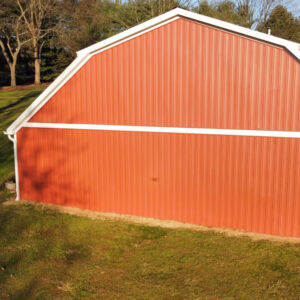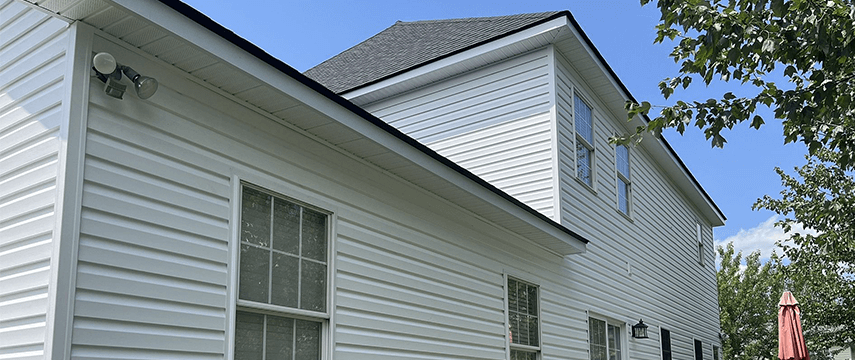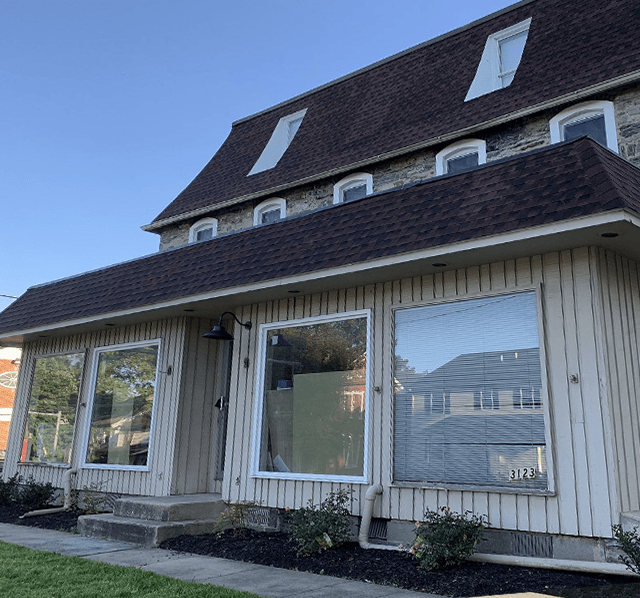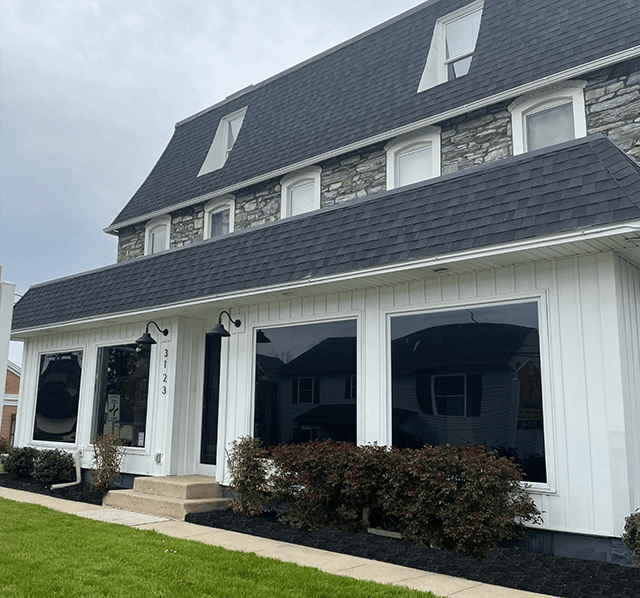We all know that beauty comes from within, but for your home, you want it to look good inside and out. Since your siding has a big visual impact on your house, you need to monitor when it’s nearing the end of its life. Today we’re going to walk through 10 siding replacement signs that you need to know.
Siding Replacement Signs Every Homeowner Should Know
Siding is your home’s first line of defense against the elements. It keeps out water and regulates temperature, so making sure it’s in top shape is essential to having a safe and comfortable home. It’s also the best way to prevent minor problems from escalating into full-blown structural damage. Here are the signs you need to watch out for:
1. Misshapen Siding
The first indication that it’s time to replace your siding is if it’s misshapen. Walk around your house and take note of any rotting, warping, or sagging sections. Do you see cracks, holes, or missing pieces? Surface damage like this can cause water to seep in and lead to a major problem. Be sure to inspect the layer beneath to see if the rotting goes all the way through.
A few loose or damaged panels can be a quick fix, but significant missing pieces is a serious issue. Always address this problem straight away by calling a local contractor for a siding replacement estimate.
2. Pest Damage
Another siding replacement sign is pest damage. There are many creatures that will leave lasting marks on your home if you’re not careful.
The first potential pest is carpenter ants. They thrive in moist wood, so an infestation suggests you have a rotting issue on your hands. If you spot the ants themselves or notice piles of wood shavings on the ground, that’s a clue you may be dealing with carpenter ants.
Another popular nuisance is termites. They can burrow into your siding and impact the integrity of your house. To check if these insects are present, just tap lightly on your siding. If it sounds hollow, then you have a termite problem.
The last creatures are woodpeckers. They try to nest in your siding where two pieces join. Thankfully, they are easy enough to spot—just listen for their tapping!
3. Fungus
Mold and mildew are a clear sign of worn siding. If you spot any kind of growth on your home’s exterior, especially near the seams, investigate further. Mold grows wherever there is moisture, so always check if there’s more hiding underneath.
If the mildew only covers a panel or two, and you know the cause, then you may be able to clean the damaged sections. However, if it’s a widespread issue and the source is unknown, then a full replacement is probably the solution.
4. Blistering
Have you ever noticed bubbles forming under the surface of your siding? That means moisture has gotten trapped. Blisters like these are a clear indicator that your siding is no longer doing its job of keeping out water, and it may be time for a fresh start.
5. Faded Siding
Your siding color can make a statement, but the vibrancy doesn’t always last. When the color fades, you know the siding is nearing the end of its life, and its weatherproofing won’t be as effective.
6. Higher Energy Bills
Another way siding damage shows up is in your energy bills. Higher costs could mean that your siding isn’t insulating as well as it should. Its main purpose is to retain heat and cold throughout the year. If it’s not doing its job, then there is damage somewhere that needs to be addressed. Explore all potential culprits (like leaks and drafty windows) so you can keep those bills as low as possible.
7. Peeling Paint Inside
Take your inspection inside and check your walls for this siding replacement sign—peeling paint and wallpaper. When your siding isn’t keeping out moisture, you may notice your paint is affected. Water damage inside points to a problem on the outside that you need to tackle.
8. Heavy Storm Damage
Did a serious storm sweep through recently? It’s always a good idea to inspect your home for any issues. Look for cracked or missing siding, and examine both the exterior and interior for signs of water damage. If the impact is severe, replacing your siding may be the best solution.
9. Higher Maintenance
Another sign of worn siding is if it requires more maintenance than normal. On average, your siding should be repainted every 5-10 years. If you need to do it more often, then that may be a problem with the material.
Recurring repairs are a red flag. Siding should be able to resist most damage. If it’s not, let a professional take a look. While small problems are easy to tackle yourself, a full siding replacement done by a professional could save you time and money. If you’re tired of the hassle of frequent maintenance, replacement may be a better option.
10. You Want Something New
The last siding replacement sign is that your tastes have changed. Maybe you’re tired of the color and style, want a lower-maintenance material, or are just craving something new. Whatever the case, replacing your siding can give your home a whole new look and help you fall in love with it all over again.

Why Siding Replacement is Important
Siding is important because it provides protection, insulation, and curb appeal. Some problems are small enough that they only need a quick repair, while other issues point to widespread damage. The best way to know is to ask an experienced contractor. We’ll give you our honest opinion about what’s best for your home.
There are several reasons it’s important to replace your siding when it’s worn out:
- Improves energy efficiency (and ultimately saves you money)
- Increases curb appeal
- Protects you from the wind, rain, and temperature fluctuations
- Prevents pests
- Decreases your home maintenance
- Keeps you safer and reduces structural issues
- Increases your property value
No siding lasts forever (although brick is pretty close). No matter which material you have, one thing is true—the best time to replace siding is when it shows signs of damage. Waiting will only make the issue worse.
| Material | Average Siding Lifespan |
| Vinyl | Up to 40 years |
| Aluminum | Up to 40 years |
| Wood | 15–40 years |
| Stucco | 50–80 years |
| Brick | 100+ years |
Siding Maintenance Tips
The best way to extend your siding lifespan is by keeping up with maintenance tasks. Every material requires something different, but here are some general tips to follow.
Remember to inspect your siding at least twice a year (or after a heavy storm) to make sure everything is good to go. Walk around your property and thoroughly check for the siding replacement signs we discussed above, taking note of any damage.
Once a year, clean your siding to remove dirt and debris that’s built up on the surface. And while you’re at it, consider giving it a fresh paint job as needed. Trim trees and shrubs that are growing too close to your house to prevent them from damaging the siding. And lastly, always repair minor damage as soon as possible so it doesn’t grow into a major problem.
With these siding maintenance tips, you’re equipped to handle anything.
Siding Replacement with KSW
If you’re in the market for home repairs, you’ve come to the right place. When looking for professional siding replacement, you want a contractor that will do the job right the first time. Your house’s siding is highly visible, and it plays a crucial role in keeping out the elements. We know it’s an important investment for any homeowner, and KSW is the team for the job.



